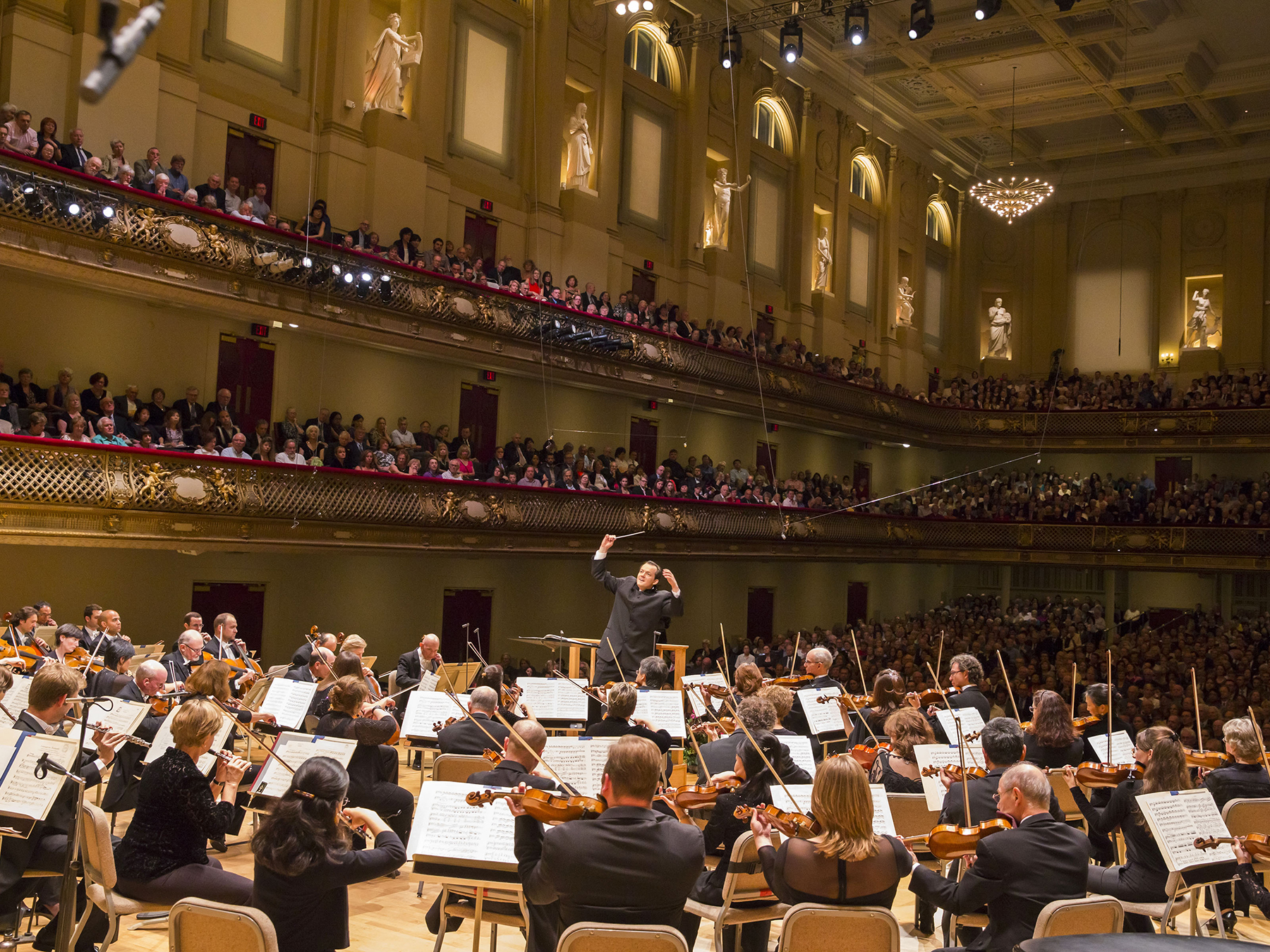Why is Classical Music So Emotional?
Being a musician I am asked a lot of questions about music. This past weekend when I was at an orchestra gig I was asked, why is classical music so emotional? I had never been asked this before and the question caught me off guard. I decided to write this article to organize my thoughts on the topic.
Classical music is often considered to be emotional due to its use of complex harmonies, melody, and form. These elements work together to create a wide range of emotional expression, from intense and powerful to subtle and contemplative. Additionally, many classical compositions are written with the intention of evoking specific emotions or telling a story, which can make them more emotionally resonant for listeners.
Classical music also has a certain timelessness and universality that can make it emotionally powerful. Its melodies can express deeply human emotions that are understandable across cultures and throughout history. The technical skills and virtuosity required of classical musicians also lends itself to emotional performance, it allows the musicians to convey their emotional state through their playing and create a more intense and direct connection with the listener.

Classical music is also often associated with tradition, ceremony and important events, which can contribute to its emotional impact. A piece of music that has been used in a specific context or has been passed down through generations can have a powerful emotional resonance.
Overall, classical music's use of complex harmonies, melody, form, and traditional elements, along with the skill and emotion of the performers, contributes to its emotional power.
I now want to share my top 3 emotional pieces of classical music with you:
- Mozart: Requiem in D K. 626
Mozart's Requiem, also known as the Requiem in D minor, is a famous classical music composition by Wolfgang Amadeus Mozart. The work was left unfinished at the time of Mozart's death in 1791 and was completed by Franz Xaver Süssmayr. Despite this, it is considered one of Mozart's greatest compositions, and is widely performed in concert halls and churches around the world.
The Requiem is a choral and orchestral work in the form of a mass for the dead. It is written for soloists, choir, and orchestra, and it comprises of six movements: "Introitus", "Kyrie", "Sequentia", "Recordare", "Agnus Dei" and "Lux Aeterna", closing with the "Communio: Lux Aeterna".
The music of the Requiem is marked by its emotive power and intensity. The "Introitus" begins with a sense of reverence and solemnity, setting the tone for the rest of the work. The "Kyrie" follows with its imploring, supplicatory text, featuring a beautiful melody sung by the choir. The "Sequentia" is particularly striking, including the "Dies irae" and "Tuba mirum" with its powerful and dramatic use of voices and orchestra, it's considered one of the highlights of the work. The "Recordare" is one of the most emotionally powerful moments in the requiem, a plea for mercy sung by the soprano soloist. The "Agnus Dei" is a poignant, peaceful end to the work, with a serene melody sung by the choir and featuring the soloists. The final "Lux Aeterna" is a powerful and uplifting choral setting of the "Eternal Rest" text, brings the work to a close.
The Requiem's story behind its composition is also an interesting one. The commission for the work was originally believed to have come from a mysterious figure, later revealed to be Count Franz von Walsegg, who intended to pass the piece off as his own composition. Mozart, who was ill and facing financial difficulties, accepted the commission but was only able to complete a portion of the work before his death.
It is said that Mozart believed that the work was intended for his own funeral, and that this belief may have added to the intensity and emotional depth of the composition. This notion was only reinforced by the fact that Mozart died before he could finish the piece.
Mozart's Requiem is considered a masterpiece of the choral-orchestral repertoire, it has become one of the most popular and frequently performed choral works in the Western classical tradition. This is in part due to its powerful and emotive music, but also because of the sense of mystery and intrigue that surrounds its creation and commission. It's an emotional, evocative and powerful work, that continues to move and captivate audiences to this day.
Mozart's Requiem is a composition that combines the elements of a traditional mass for the dead and Mozart's own personal style. It's a work that showcases Mozart's skill as a composer, his ability to create powerful and emotive music, and the deep emotional impact that it has on its listeners. It's a work that has stood the test of time and continues to be one of the most performed and beloved works of classical music in the world.
- Debussy: Suite Bergamasque, L.75: III Clair de lune
"Clair de lune" is a piece of music composed by Claude Debussy, it is the third movement from the Suite bergamasque, a piano suite which was written in the late 19th century. The suite is one of Debussy's most famous and enduring works, and "Clair de lune" is arguably the most popular movement from it.
The title "Clair de lune" translates to "moonlight" in English, and Debussy's music captures the evocative and ethereal nature of moonlight perfectly. The piece is written for solo piano and is characterized by its use of impressionistic harmony, melody, and rhythm. Debussy's use of the whole-tone scale, which he pioneered, adds to the otherworldly and dreamy quality of the music.
The opening of the piece is marked by a delicate and soft melody, played in the right hand of the piano, as the left hand creates a gentle, undulating accompaniment. This melody is then repeated and developed throughout the piece, as the harmony and rhythm change and evolve. The piece features a variety of tonal colors, and Debussy's use of dissonant harmonies creates a sense of tension and release.
One of the most striking elements of "Clair de lune" is Debussy's use of rubato, or the deliberate deviation from strict tempo. This technique creates a sense of spontaneity and freedom in the music, and it gives the impression that the notes are being improvised as the piece progresses. This, coupled with the use of impressionistic harmony and melody, creates a sense of musical impressionism, which is characteristic of Debussy's music. If you want to learn more about we offer music lessons in Plymouth-Canton.
"Clair de lune" is a highly evocative and emotive piece of music. It's often associated with feelings of nostalgia and longing, and it's easy to imagine oneself in a peaceful, dreamy landscape while listening to it. The music is also a great example of Debussy's skill as a composer, his ability to create a sense of atmosphere and emotion through his music, and it's still captivating and enduring over a century after its composition. The piece has been featured in various movies, TV shows and commercials, and it has become a classic of the piano repertoire.
Please check out this iconic and timeless piece of music that captures the essence of moonlight through its ethereal and evocative harmonies, melody, and rhythm. Debussy's use of impressionistic elements, such as whole-tone scale and rubato, creates a sense of freedom and spontaneity, making it a highly emotive and captivating piece. It's a work that continues to be enjoyed by audiences around the world and is considered a true masterpiece of the piano repertoire. I'm going to end this list with another piece from a famous french romantic composer.
- Ravel: Pavane pour une infante défunte
"Pavane pour une infante défunte" is a piece of music composed by Maurice Ravel in 1899. The title translates to "Pavane for a Dead Princess," and it is a piece for solo piano. The Pavane is a slow, stately dance that originated in Renaissance court life, and Ravel's composition evokes a feeling of nostalgia and sadness for a lost era.
Ravel composed the piece while he was still a student at the Paris Conservatoire, and it was first performed in public in 1900. The piece was not an immediate success, but over time it has become one of Ravel's most popular and enduring compositions.
One of the most striking aspects of the piece is its harmonic structure. Ravel utilizes a technique known as "whole-tone scales" throughout the piece, which creates a sense of ambiguity and instability in the harmony. Additionally, Ravel employs the use of modal scales, which helps to create the sense of nostalgia and timelessness that is associated with the piece.
The composition is also notable for its use of the pedal, which creates a hazy, ethereal effect. The Pavane's mournful melody also employs a technique known as "ornamentation" which involved adding grace notes, trills, and other embellishments to the melody to create a more expressive and emotionally rich sound.
The Pavane's slower tempo and emotive melody make it well-suited for use in films, and it has been featured in several films over the years, adding to the piece's popularity and cultural significance.
Pavane pour une infante défunte is a piece of music written by one of the most important figures in the development of French music in the late 19th and early 20th centuries. Its use of dissonant harmony and unconventional modulation, along with the technique of ornamentation, the use of pedal, and slow tempo make it a timeless piece that continues to resonate with listeners today. The work's ability to evoke feelings of nostalgia and sadness has made it a favorite among many music lovers and it is considered one of Ravel's most important and enduring compositions.
Well I hope you have enjoyed my list of emotion classical music and learned a thing or two about why classical music is so emotional.



